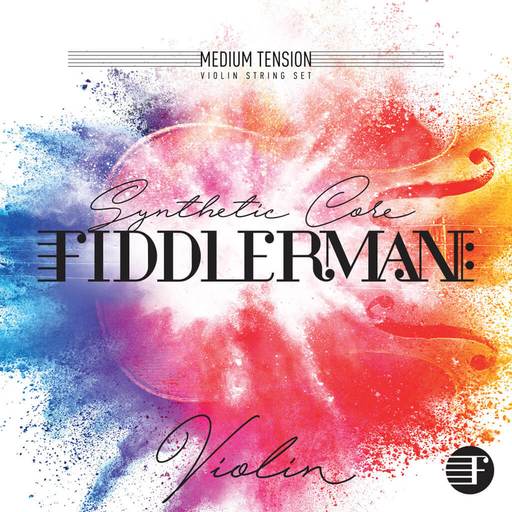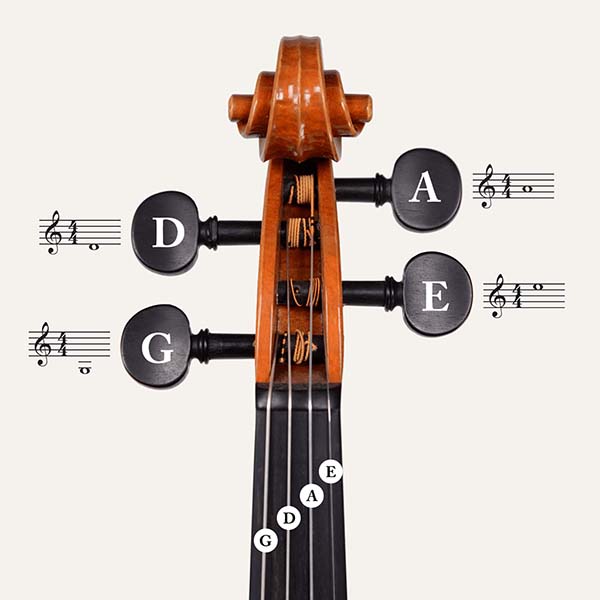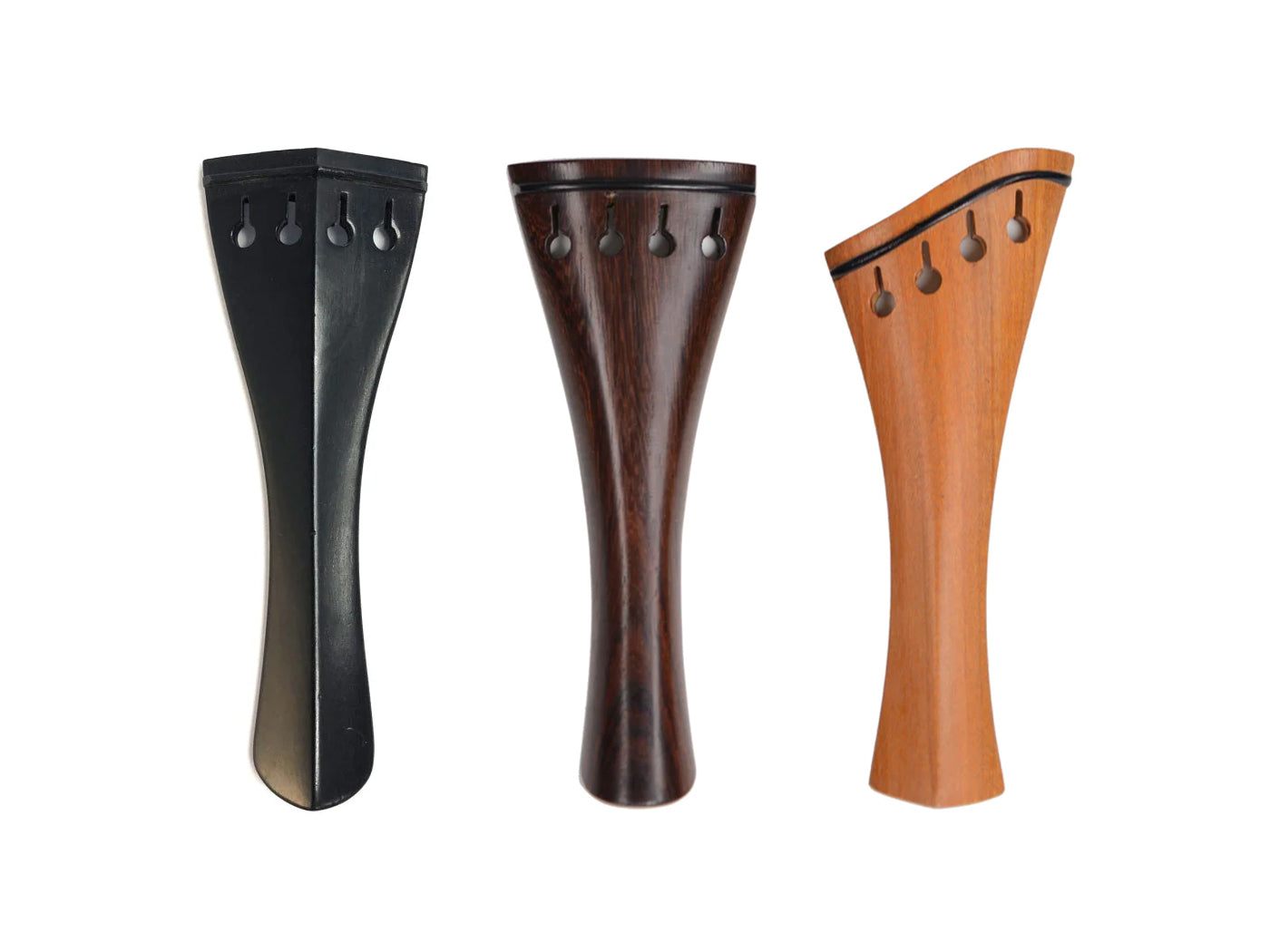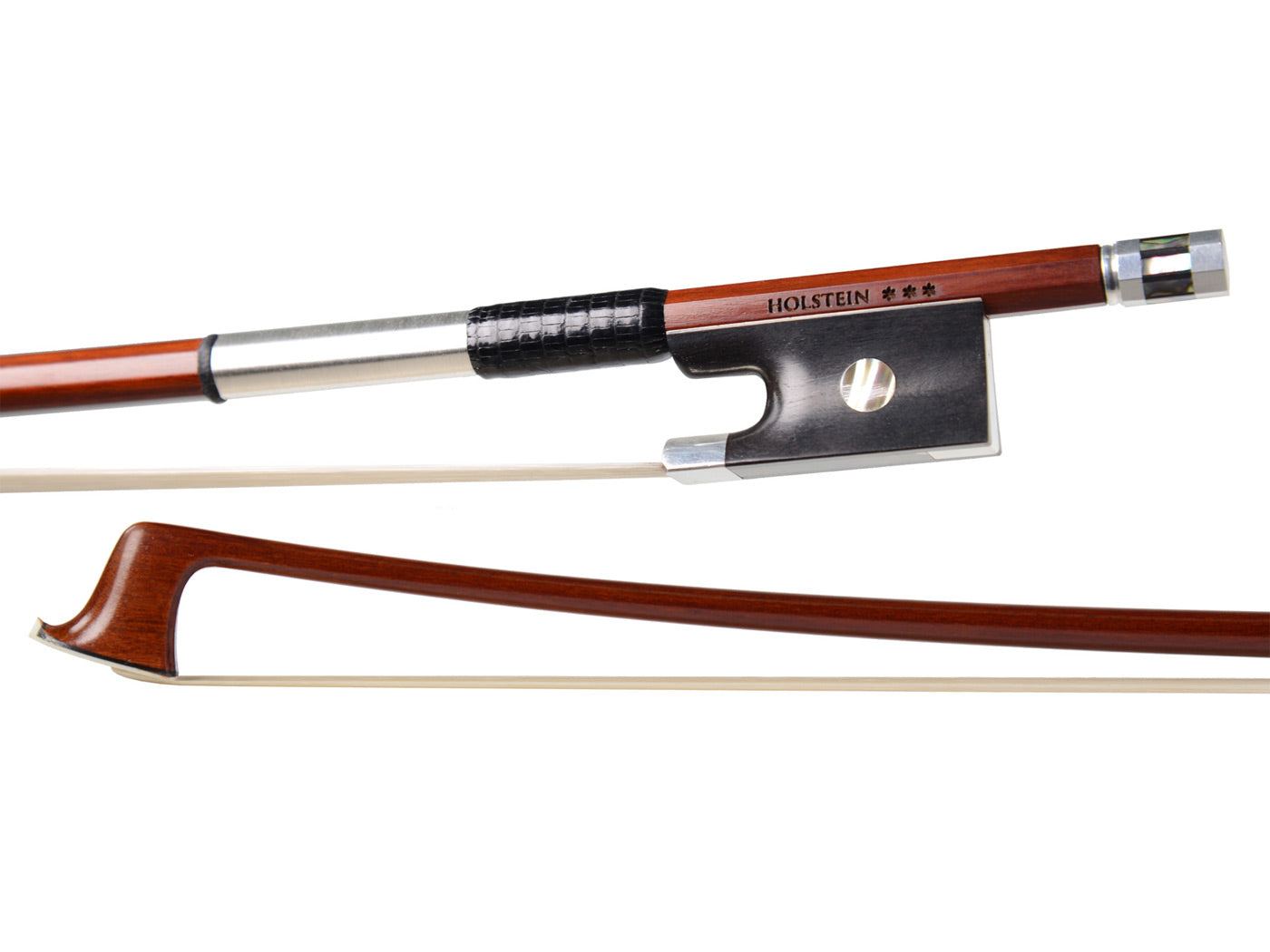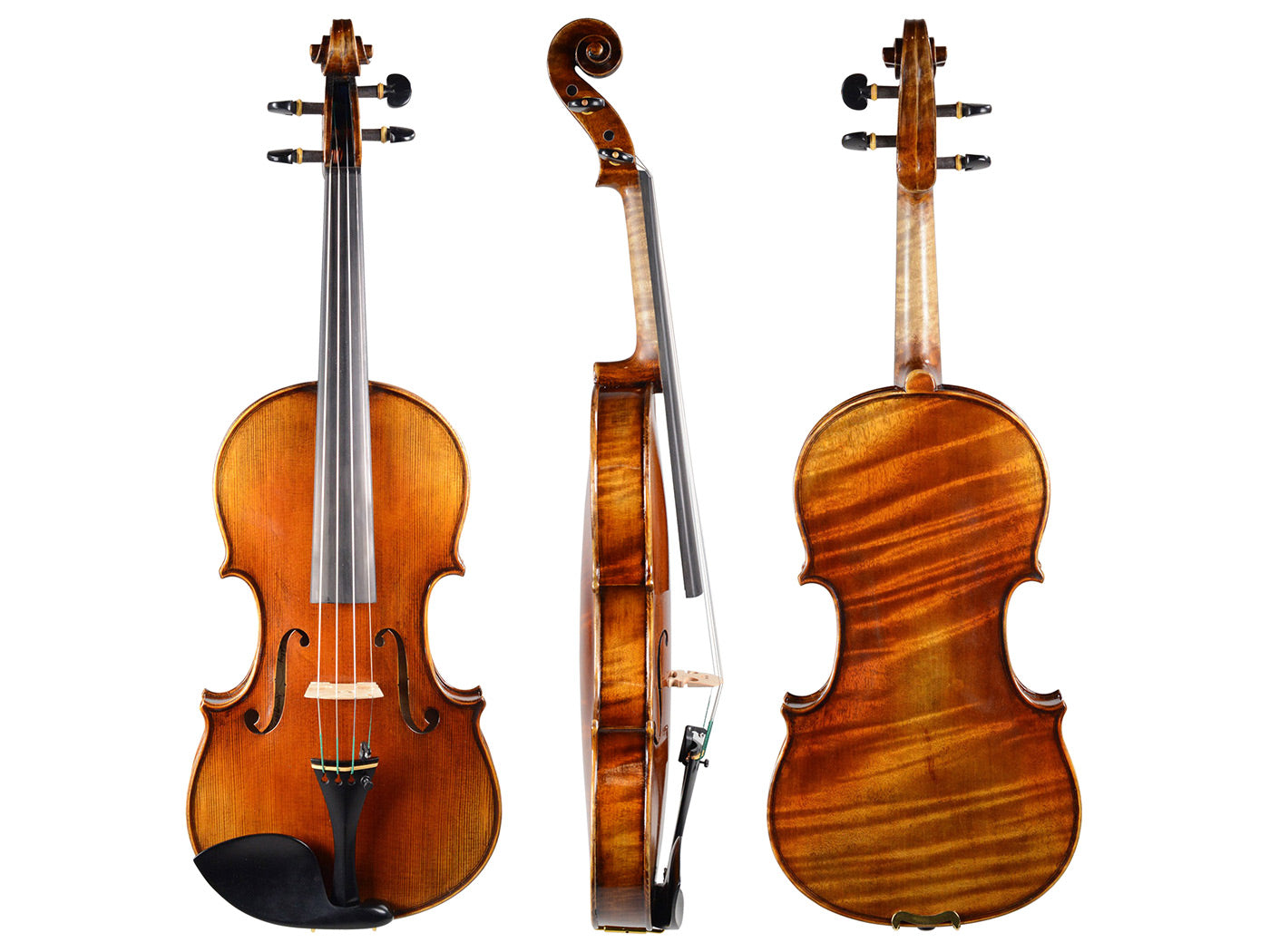Importance of a Tailpiece
By Fiddlerman (Pierre Holstein) - Not everyone is aware that a tailpiece effects the sound as well as the playability of the instrument. Its basic function is to fasten the strings to allow them to vibrate freely while the instrument is being played. Though a well made tailpiece may enhance the sound of the instrument, if it is not placed in the proper position the violin may not play to its potential. The same could be said of a poorly made tailpiece, which may even cause a violin to sound defective.
The three basic styles of tailpieces are: French, Tulip, and Hill. The main difference between the three is mainly visual. Though they are designed in different countries, their design hardly influences the sound, and selecting one is mostly a question of taste.
The woods that are most commonly used to make them are ebony, boxwood, and rosewood. Chinese makers also use tropical woods from trees such as the jujube tree, in which some makers say have similar characteristics (stronger and better) to boxwood. Pernambuco is the most expensive of the woods used for tailpieces. Known for its resonance and strength, many makers believe that pernambuco transfers the tone better than all the other woods. This is why it is used on many of the expensive instruments. One interesting fact about pernambuco is that the wood is toxic and difficult to work with. When sanding this wood, the maker must wear a mask in order to avoid breathing in the toxic dust.
The proper weight of a tailpiece has been an ongoing discussion among makers, as some continue to experiment with that aspect. Being that the weight of wood varies, some claim that lighter is better since it produces a lighter sound. These makers use as little material as possible. Some makers and luthiers that work on very expensive instruments experiment using different tailpieces in order to see which would achieve the best results. Usually they choose box wood. But sometimes the pernambuco, which is heavier, actually vibrates more and produces a stronger sound.
For most people, the appearance of the violin is equally important as the sound it produces. It is common to match a dark instrument with a dark tailpiece, such as rosewood or ebony.
Most people can hear differences in the sound structure when you change a tailpiece. Of course, this depends on how well developed your hearing is. The same can be said when changing the chinrest or strings on a violin that you may have had for years. Suddenly the sound can open up by vibrating more, and you can notice more overtones. Similarly, the tailpiece can also enhance the quality of the sound as well as the characteristics of the violin. This could result in an instrument which is easier to play and even aide in achieving better intonation. As a result it can inspire you to produce a better sound and play more!
Tailpieces come in different sizes, typically between 107-112 millimeter. The correct size depends on the length of the violin and is very important — it can be compared to getting the right shoe size.The tailgut (tailpiece adjuster) secures the tailpiece to the end button at a specific length from the bridge. Though it is still referred to as tailgut, gut is rarely used today. Most makers use nylon adjusters because they hardly react to temperature changes and humidity. Metal adjusters are also used. When ordering a tailpiece, the most important thing for sound is that you adjust the tailgut as short as possible, so that the tailpiece will stay in place.
Placement of the tailpiece is important since it can enhance the response and harmonics. If the tailgut is too long, the tailpiece could end up too close to the bridge, which will kill the vibrations.
If you have undesirable vibrations coming from your instrument, carefully analyze your chinrest, strings and the frequently overlooked option that the problem may be the tailpiece. Also make sure if you have frets and collars on the pegs, that they are properly glued. If not, they could rattle and make the violin sound like it is broken.
One famous soloist had his luthier remove the top of his instrument hoping to find that the cause of a bad sound was a possible crack. Not a crack was found and the culprit ended up being the tailpiece, which was never considered by either at first.
In conclusion, getting rid of a buzzing sound and bad vibrations may be simply as easy as adjusting or changing you tailpiece!

